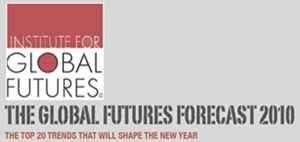Books
- Anderson, Elijah. Code of the Street: Decency, Violence, and the Moral Life of the Inner City. New York: W. W. Norton & Company, 2000.
- Nash, Gary B. Forging Freedom: The Formation of Philadelphia’s Black Community, 1720-1840. Cambridge, MA: Harvard University Press, 1991 (reprint).
- Stevick, Philip. Imagining Philadelphia: Travelers’ Views of the City from 1800 to the Present. Philadelphia: University of Pennsylvania Press, 1996.
- Alotta, Roberta. Mermaids, Monasteries, Cherokees and Custer. Santa Monica: Bonus Books, 1990.
- Nese, Jon M. and G. Schwartz. Philadelphia Area Weather Book . Philadelphia : Temple University Press, 2005.
- Kavanagh, James. Philadelphia Birds. Phoenix, AZ: Waterford Press, 2001.
- Colimore, Edward. The Philadelphia Inquirer’s Guide to Historic Philadelphia. Philadelphia: Camino Books, 2003.
- Mauger, Ed. Philadelphia Then and Now. San Diego, CA: Thunder Bay Press, 2003.
- Weigley, Russell E. (Ed). Philadelphia: a 300 Year History. New York: W. W. Norton & Company, 1982.
- Lapsansky, Emma Jones and Anne A. Verplanck (Eds). Quaker Aesthetics: Reflections On a Quaker Ethic in American Design. Philadelphia: University of Pennsylvania Press, 2003.
- Rockland, Michael Aaron. Snowshoeing Through Sewers: Adventures in New York City, New Jersey, and Philadelphia. New Brunswick, NJ: Rutgers University Press, 1994.
Reports
- www.philaplanning.org/plans/areaplans/areaplans.html
Reports on neighborhood blight and redevelopment by the Philadelphia City Planning Commission - www.philaplanning.org/plans/vls.pdf
Vacant Land in Philadelphia, a 1995 report by the Philadelphia City Planning Commission - www.lgean.org/documents/Revitalization%20of%20Vacant%20Properties.pdf
The Revitalization of Vacant Properties, a report by the International City/County Management Association - www.nrdc.org/water/drinking/uscities/pdf/philadelphia.pdf
The National Resources Defense Council’s 2003 report on pollution in Philadelphia’s drinking water - www.housingalliancePA.org/Issues/Issues_Home.htm#Reclaiming%20Abandoned%20PA
The Housing Alliance of Pennsylvania’s report and action guide for vacancy in Pennsylvania
Websites
The City of Philadelphia and Its Neighborhoods
- www.phila.gov
The official website of the City of Philadelphia includes links to agencies, officials, and policy documents - www.pasda.psu.edu
Pennsylvania Spatial Data Access website with Pennsylvania GIS information, including online GIS tutorials - www.cml.upenn.edu
The cartographic Modeling Lab at the University of Pennsylvania - http://citymaps.phila.gov
Maps and photographs from the city of Philadelphia, including aerial photos, zoning maps, and a searchable photo archive - www.ushistory.org/philadelphia
Historical background on Philadelphia from the Independence Hall Association in Philadelphia - www.pbs.org/philadiary
The website companion to the PBS film “Philadelphia Diary” based on interviews with Philadelphia residents - www.epa.gov/epahome/commsearch.htm
The EPA website, with a searchable “EnviroMapper” and “Envirofacts,” as well as watershed information
Vacancy and Vacancy Initiatives in Philadelphia
- www.cml.upenn.edu/nbase
Philadelphia NIS NeighborhoodBase, with GIS maps and charts of Philadelphia neighborhoods - www.philaplanning.org/plans/areaplans/areaplans.html
Blight and redevelopment plan information from the Philadelphia City Planning Commission - www.phila.gov/nti
The City of Philadelphia’s Neighborhood Transformation Initiative (NIS), lead by Mayor John Street
Philadelphia’s Natural Resources
- www.phila.gov/fairpark
Philadelphia’s city parks system - www.fow.org/park/park.htm
Friends of the Wissahickon website, with information on the geology, soils, vegetation, wildlife habitats, and water quality of this valley in Fairmount Park - www.nlreep.org/amy’s.htm
Downloadable PDF brochures on Philadelphia’s native flora - www.npwrc.usgs.gov/resource/distr/lepid/bflyusa/chklist/states/counties/pa_101.htm
Philadelphia’s butterflies, from the Northern Prairie Wildlife Research Center of the US Geological Survey - www.fow.org/download/checklistofthebirds.pdf
PDF brochure on birds found in Wissahickon Valley - philadelphia.extension.psu.edu/
Penn State Extension for Philadelphia, with information on soil testing, plant cultivation, and the Penn State Urban Gardening Program
http://www.vanalen.org/urbanvoids/index.php?option=com_content&task=view&id=77&Itemid=49

